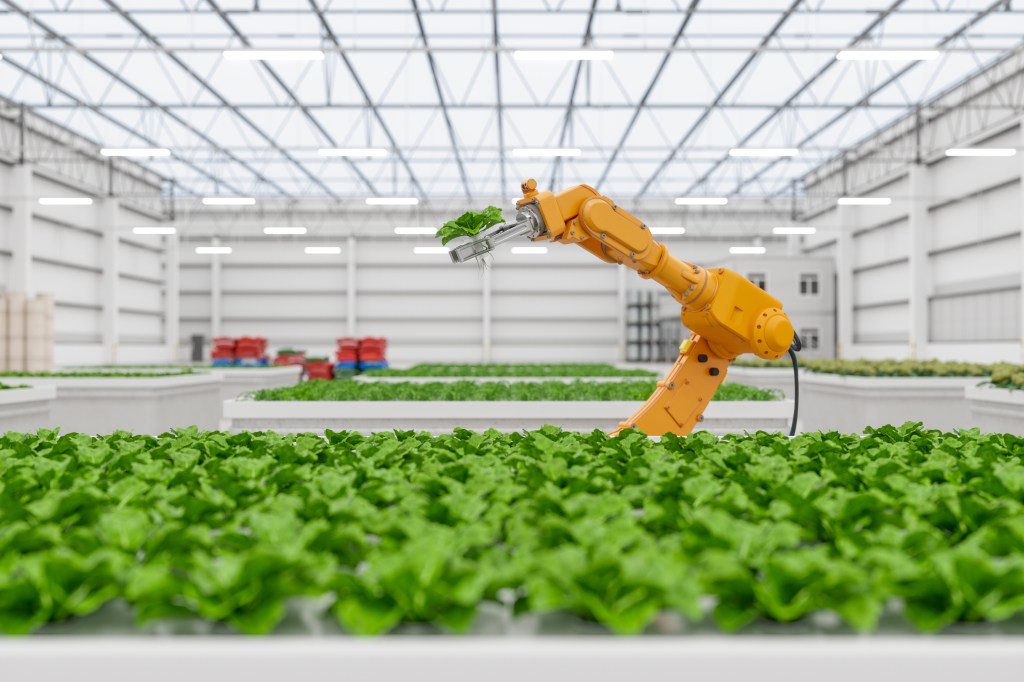Innovation will play a key role in driving future growth in helping agriculture continue its growth trajectory

Australia’s agriculture sector is one of the nation’s most important industries – and it continues to grow. In 2020-21 Australian agriculture saw a 17% increase in value to $71 billion according to ABS data. The gross value of wheat increased 33% to $13 billion in 2021-22 and the gross value of livestock products increased 7% to $9 billion. This was due to a combination of favourable growing conditions and better access to water, with farmers using improved seasonal conditions and better pastures as an opportunity to rebuild livestock stocks.
The strong performance of agriculture is expected to persist through 2023 and 2024 with Rabobank also predicting further growth for Australia’s agricultural sector.
Innovation will play a key role in driving future growth in helping agriculture continue its growth trajectory – with investors and startups taking advantage of opportunities within this vital economic sector.
Digitisation is transforming the sector
Despite the recent wins for the sector, there are still challenges. Issues range from labour shortages to global food security challenges and unpredictable weather patterns. Increasingly, the sector is turning to technology and digitisation for the answers.
Australian farmers are harnessing the power of robotics to combat long terms labour shortages. A promising innovator in this space is SwarmFarm, which develops speciality robotics solutions for different agricultural needs. SwarmFarming is described as a new paradigm for agriculture “where swarms of small, nimble, autonomous platforms create new farming practices”.
Supply chain transparency is another hot topic within agriculture, increasingly so as consumers become more interested in food provenance. The increasing adoption of high-value, objective data into smart, integrated agriculture technology is rectifying this issue while greatly improving timing, productivity and sustainability throughout crop and meat supply chains. Producers and processors are now able to track a grain crop or a cattle mob from farm to fork, and thanks to data measurements and key junctures, they can quickly identify where processes can happen faster or more efficiently with fewer resources being consumed.
We expect technology to emerge that takes the concept even further. Digitisation will evolve to a point where technology can predict the performance of a crop when the seed is still in the ground, or what kind of yield a chicken could eventually bring while it is still in the feedlot.
A strong commitment to sustainability
With the Australian government committing to a reduction of emissions by 43% and net zero emissions by 2050, Australian agriculture has a key role to play in improving sustainability measures.
University of California Davis air quality specialist, Frank Mitloehner estimates that by reducing methane by 20% to 30%, via genetics, feed additives or other means, the livestock industry could be climate neutral within ten to twenty years.
Feed additives have already made great strides in this regard, with seaweed being a particular focus. Future Feed, developed by CSIRO, Meat and Livestock Australian and James Cook University, is a food supplement derived from seaweed that is already being used to increase production and reduce emissions.
Forbes Australia issue 3 is out now. You can pick up your copy at all good newsagents or become a member here.
Animal genetics, however, is still a largely untapped arena when it comes to emissions reductions. By concentrating on an animal’s genetic makeup and feeding this information into selective breeding programs, producers can look to steer their livestock towards lower emissions-producing diets or prioritise animals that produce fewer emissions altogether.
More Australian food and drink will be globally competitive
Australia exports around 72% of the total value of its agricultural, fisheries and forestry production. and Australian wines and red meat have long been globally recognised as some of the highest-quality products on the market based on flavour and food safety.
Both the wine and meat sectors have experienced considerable turbulence over the past few years, with issues ranging from trade sanctions and geopolitical instability to climate challenges and the rising cost of living.
Some relief is finally coming with new trade agreements signed with the UK and India. These deals will be an opportunity for Australia to create new product lines that appeal to local tastes and price points. India is seen as a particularly exciting market for Australian wine, as increasing urbanisation and growing wealth create higher demand for premium imported products within the subcontinent. Some wine producers are already developing new product lines that pair better with Indian cuisine and tastes.
All in all, 2023 looks like a very positive year for Australian agriculture. Given its importance to the economy, a strong agricultural sector benefits not only producers but wider society. We all need safe, quality food, produced sustainably, and the industry is on track to realise that goal.
Remo Carbone is CEO of MEQ Probe
Look back on the week that was with hand-picked articles from Australia and around the world. Sign up to the Forbes Australia newsletter here.


